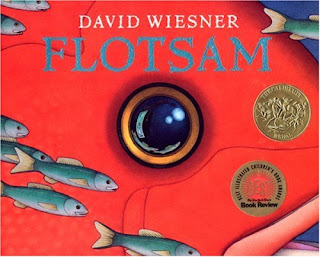Balarama A Rojal Elephant
Ted and Betsy Lewin
Lee & Low Books Inc., 2009
ISBN-978-1-60060-265-8
Summary
Balarama is the name of the royal Indian elephant who captures the hearts of Ted and Betsy Lewin. They tell the story of their trips to India in the first person, and the realist illustrations give add a sense of culture and beauty to their experiences. The book is dedicated to an elephant with a strong aura who had passed away the the previous year, Drona. The magnificent elephant had carried the golden 'howdah' through the traditional Hindu procession, Mysore Dasara. Balarama picks up where Drona left off and preforms the procession magnificently.
Critical Analysis
Ted and Betsy Lewin have created a book which is culturally nourishing for children. They are the main human characters in the story which takes place in India, and all of the other characters are described and illustrated in a dramatic, yet very real way. The Indian vernacular is not watered down, and children have the opportunity to familiarize themselves with another world, culture and the Hindu religion. I think that is brilliant for the authors to include the glossary, and elephant facts at the end of the book. When the reader is intrigued, it is the best time to teach terms and facts.
The details about Drona's untimely death are not dramatized or glazed over for the sake of young readers. The This segment could helpful for children who have lost a loved one or who have suffered an accident. It teaches that although painful losses occur in life, new adventures and beauty carry on. The illustrations paint an intricately detailed view of India, the people and the culture. Bright colors reveal the the descriptions of the Indian ceremonial and religious items, and the reader can easily imagine being there. Illustrations depicting more serious moments in the book take up the entirety of the page, while more playful moments are characterized in a similarly playful way. Onomatopoeia fonts are designed in to the images which set the dynamic mood. The final photograph of the Balarama is clipped from The Times of India, and it gives the reader a since of pride to see the photo along side the wonderful reviews.
Awards:
Caldecott Honor Winning authors
Reviews:
"The combination of compelling travelogue and images is immediate and dramatic. Kids will also enjoy the extensive back matter, which includes elephant facts and a glossary." Grades 2-5. --Hazel Rochman of Booklist
"If the art doesn't grab chidren, the elephants surely will. Wonderful."—Paula Willey, Baltimore County Public Library, Towson, MD of School Library Journal
Connections:
India Curriculum Unit: Monkeys, Elephants and Turbans: A Literary and Mathematical Trip to India
Created by: Andrea Edson
This unit created for Kindergarten students incorporates the story and illustrations of Balarama, to help students to recognize:
-Culture
-Patterns
-Speech
-Shapes

